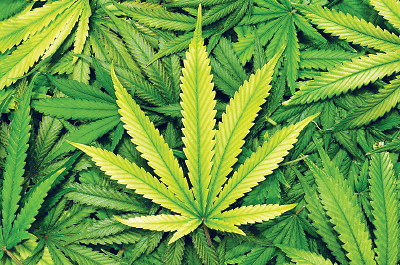The United States is engaged in “a new form of reefer madness,” Alan Budney, Ph.D., a professor of psychiatry at Geisel School of Medicine at Dartmouth College, told an audience at a National Institutes of Health (NIH) conference on marijuana and cannabinoids in March.
“Legalization has brought new ways to smoke, eat, or vape cannabis, reinforced by high potency, attractive packaging, and heavy advertising,” he noted. Such factors have likely contributed to growing numbers of people using marijuana and the public misperception that marijuana is a “safe” drug.
“We’ve lost the war to the legalization folks,” he said.
At least 23 states and the District of Columbia have in some way legalized the possession or use of a drug still considered illegal by the federal government. As a result, scientists and policymakers are scrambling to learn more about the short- and long-term effects of cannabis on people.
The NIH conference brought together researchers from a number of disciplines to exchange knowledge on what Nora Volkow, M.D., director of the National Institute on Drug Abuse (NIDA), described as the “positives and negatives of states’ legalizing marijuana.” Volkow opened the two-day meeting on the NIH campus in Bethesda, Md.
“Tobacco and alcohol are the first and third leading causes of preventable death,” said Volkow. “They are both legal, so what does this imply for the legalization, marketing, and expanded use of marijuana?”
Among other topics, experts addressed the relationship between cannabis and psychomotor performance, cognition, and mental illness, including addiction.
Cannabis is the most commonly used illicit drug in the United States and is often associated with car crashes, explained former NIDA researcher Marilyn Huestis, Ph.D., an adjunct professor of epidemiology and preventive medicine at the University of Maryland School of Medicine in Baltimore. The tetrahydrocannabinol (THC) in cannabis impairs psychomotor performance, contributing to accidents.
“Any cannabis product found in blood increases the risk of a fatal car crash by 2.8 times,” she said, adding that psychomotor impairment resulting from cannabis can continue for three weeks after last use.
The effects of combining cannabis and alcohol are different from the effects of either drug alone. Driving simulator tests have found that while higher concentrations of alcohol in the blood are associated with drivers speeding up, the opposite is true in drivers who have high concentrations of THC in their blood; these drivers often slow down, possibly because they understand that they might be impaired.
Furthermore, there are differences in how chronic and occasional cannabis users process the drug, so coming up with a single biomarker level to incorporate in legislation is difficult, said Huestis.
Cannabis use is also associated with cognitive impairment, which often persists following acute intoxication, explained Madeleine Meier, Ph.D., an assistant professor of psychology at Arizona State University.
Studies suggest that “more frequent, persistent, and earlier-onset cannabis use is associated with greater cognitive impairment,” but less is known of the mechanism of action underlying cognitive impairment, whether cognitive ability improves with abstinence, or whether there are individual differences in susceptibility to cognitive impairment following cannabis use, she said.
“Multiple, prospective epidemiological studies indicate that use of cannabis increases risk of later psychosis, independent of confounding and intoxication effects,” said Anne Eden Evins, M.D., M.P.H., an associate professor of psychiatry at Harvard Medical School and director of the Center for Addiction Medicine at Massachusetts General Hospital.
According to Evins, there is strong support indicating that cannabis use worsens the symptoms of preexisting psychosis, good evidence that it can precipitate schizophrenia in those at risk, but only mixed support for the likelihood of cannabis as a cause of a psychotic disorder that may not otherwise have occurred.
“Cannabis is a component—one cause among other factors—that contributes to psychiatric illness,” she added. “However, it is a preventable risk factor, so prevention or delay of onset is important, especially among siblings of schizophrenia patients.”
Cannabis use disorders are similar to other addictions, said Dartmouth’s Budney. For instance, users who meet use disorder criteria for “dependence” often display withdrawal symptoms, have difficulty quitting, and have high relapse rates. Although there are currently no pharmacotherapies to treat cannabis use disorder, behavioral treatments have been shown to help patients, he noted.
In addition to developing new strategies to prevent cannabis use disorder and improve treatment, Budney said greater efforts need to be made to provide accurate information to the public about cannabis use and its risks.
“Finally, we really need a new road for cannabis regulatory science,” he added. “The problem is that science moves slowly. It’s still going to take a while, but that’s where the answers will come from.” ■
Videos from the conference “Marijuana and Cannabinoids: A Neuroscience Research Summit” can be accessed
here and
here.

